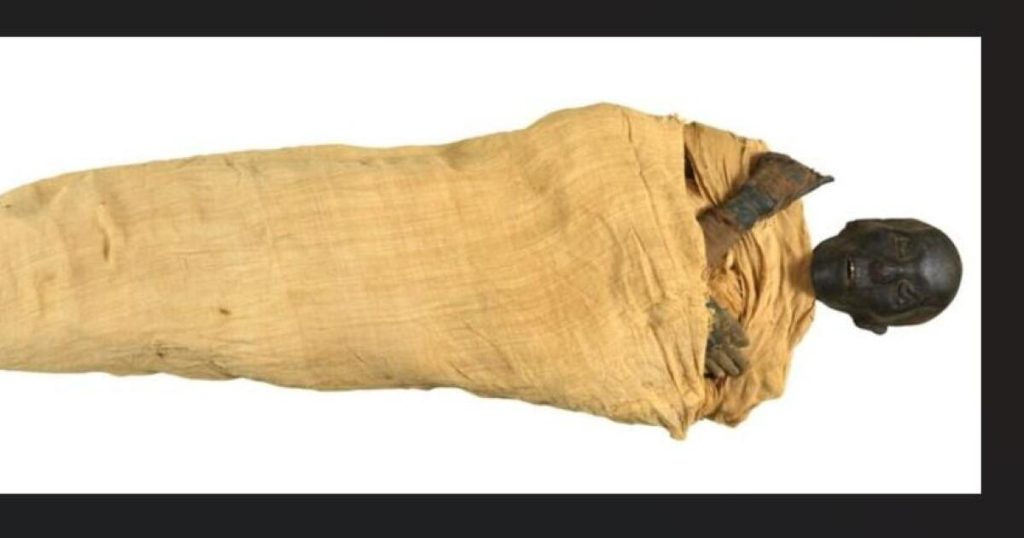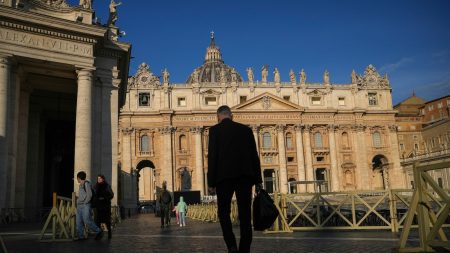A Historic Discovery: The Tomb of King Thutmose II Unveiled
In a groundbreaking announcement, Egyptian officials revealed on Tuesday the discovery of the long-lost tomb of King Thutmose II, the final resting place of one of ancient Egypt’s most elusive rulers. This tomb, belonging to the Eighteenth Dynasty, which ruled Egypt from approximately 1550 BC to 1292 BC, is the first royal tomb to be discovered since the unearthing of King Tutankhamun’s tomb in 1922. The discovery marks a monumental moment in archaeological history, offering new insights into Egypt’s golden age and the enigmatic figure of King Thutmose II.
The tomb was uncovered in the Mount Thebes region, west of Luxor and near the world-renowned Valley of the Kings, by a joint Egyptian-British archaeological mission. Initially, the site was labeled as tomb No. C4, and its entrance and main passage were first discovered in 2022. Over the past three years, a meticulous excavation process has been underway, leading to the identification of the tomb’s owner. Dr. Mohamed Ismail Khaled, Secretary-General of Egypt’s Supreme Council of Antiquities, explained that the team initially believed the tomb might belong to one of the wives of the kings, given its proximity to the tombs of Queen Hatshepsut and the wives of King Thutmose III. However, as excavations progressed, evidence emerged that conclusively linked the tomb to King Thutmose II.
Unraveling the Mysteries of the Tomb
The discovery of alabaster vessels bearing inscriptions with the name of King Thutmose II was a pivotal moment in identifying the tomb. These inscriptions referred to him as the “deceased king” and also mentioned his wife, Queen Hatshepsut, who played a significant role in his burial rites. Queen Hatshepsut, who was not only Thutmose II’s wife but also his half-sister, ascended to the throne after his death and became one of Egypt’s most powerful female pharaohs. Her involvement in Thutmose II’s burial suggests a deep connection between the two rulers, despite her eventual rise to power.
The tomb’s architecture, while simpler in design compared to other royal tombs, aligns with the stylistic preferences of the rulers who succeeded Thutmose II. Dr. Piers Litherland, head of the British team involved in the excavation, noted that the tomb’s design reflects the broader architectural trends of the time. The discovery of mortar fragments adorned with blue inscriptions and yellow stars, as well as excerpts from the funerary text “Imydwat,” further supports the tomb’s royal significance. These finds provide invaluable insights into the beliefs and practices surrounding death and the afterlife during Egypt’s New Kingdom period.
The State of the Tomb and Its Legacy
The tomb’s condition is precarious, with significant damage attributed to floods that occurred shortly after Thutmose II’s death. Mohamed Abdel Badie, Head of the Egyptian Antiquities Sector, explained that these floods likely caused the tomb’s original contents to be moved to another location, possibly to protect them from further deterioration. The mummy of King Thutmose II, discovered in the 19th century at Deir el-Bahari Cachette, is now on display at the National Museum of Egyptian Civilization, alongside other ancient royals. While the tomb itself is in a poor state of preservation, the artifacts and inscriptions uncovered during the excavation are a treasure trove for historians and archaeologists.
This discovery is a testament to the enduring allure of ancient Egypt’s history and culture. King Thutmose II’s tomb not only fills a gap in our understanding of the Eighteenth Dynasty but also sheds light on the complexities of royal succession and burial practices during this period. As the archaeological mission continues its work, the hope is that further secrets will be uncovered, revealing even more about this enigmatic ruler and his place in Egypt’s storied past.
The Road Ahead: Uncovering More Secrets
The discovery of King Thutmose II’s tomb is just the beginning of a new chapter in Egypt’s archaeological journey. The joint Egyptian-British team plans to continue its survey work, aiming to locate the tomb’s missing contents and unravel any additional mysteries hidden within its walls. The prospect of uncovering more artifacts and inscriptions is incredibly exciting, as they could provide even greater clarity on the life and reign of King Thutmose II.
This remarkable find is not only a triumph for archaeology but also a boon for tourism and cultural heritage. As news of the discovery spreads, it is likely to draw global attention to Egypt’s rich history, inspiring new generations of historians, researchers, and enthusiasts. The tomb of King Thutmose II is a reminder of the countless stories still buried beneath the sands of time, waiting to be unearthed and shared with the world.















